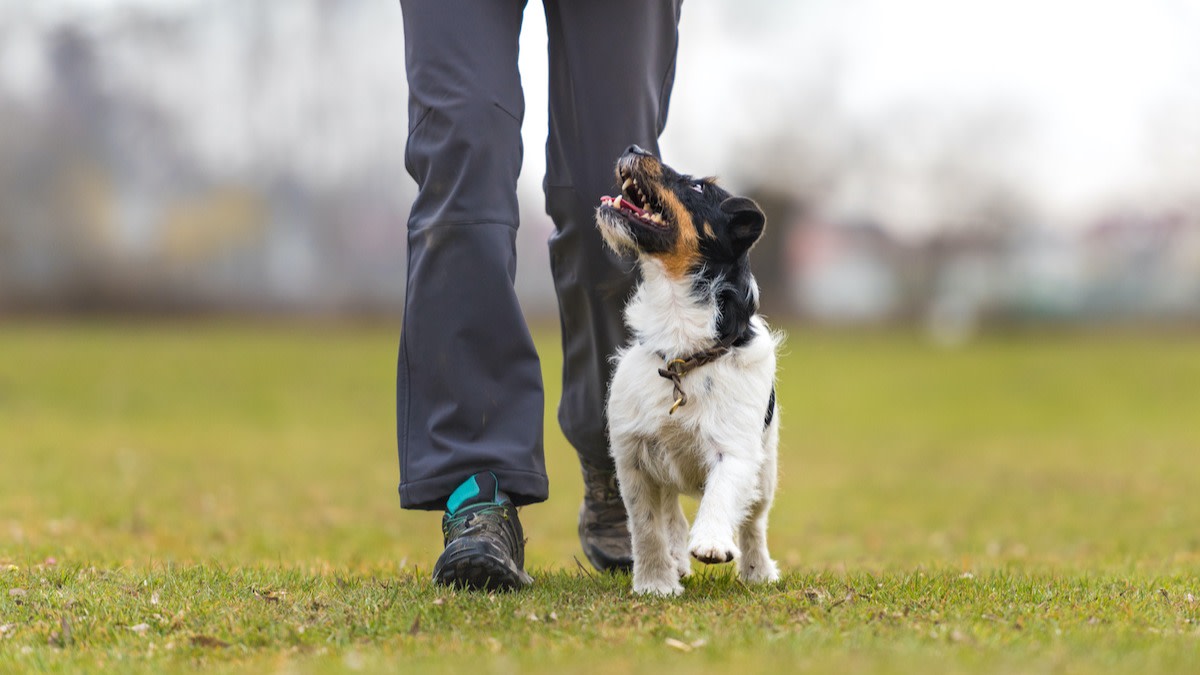How to Train a Dog to Heel: Teach a Dog to Walk at Your Pace
Written by MasterClass
Last updated: Jun 7, 2021 • 4 min read
Taking your dog for a walk on a beautiful day is lovely, but a dog that's constantly tugging on the leash and scampering off to explore the environment makes dog-walking a stressful task. Training your dog to heel is the perfect way to improve its leash manners and create a more enjoyable walking experience for you and your canine companion.
Learn From the Best
What Is Heeling?
Heeling is when a dog walks in a controlled stride directly next to its handler without wandering away or pulling on its leash. Traditionally, heeling means a dog matches its handler's pace and movements exactly, but today the term “heel” is often used interchangeably with "loose leash walking"—a less strict skill where the dog is only required to neither be lag nor pull on its leash while walking.
Why Is It Important to Train Your Dog to Heel?
Heeling is a skill beneficial for anyone looking to have more control over their dog's actions. When you train your dog to heel, your dog won’t drag you forward or lag far behind during walks. Heeling also promotes a safer dog-walking experience; dogs that know how to heel are less likely to chase other animals, run into the road, or eat toxic materials that are harmful for dogs to ingest. Heeling also establishes a closer bond between you and your dog, enabling your dog's to focus on you while improving your overall communication skills.
How to Train Your Dog to Heel
There are a few methods used to teach a dog the heel command, but one of the most effective involves using the "lure and reward" technique along with clicker training. All you'll need is a leash, a dog collar or harness, a clicker, and a handful of dog treats.
- 1. Select a training location. Attach your leash to your dog and take it to a familiar distraction-free area without other people or animals present. Your backyard or a hallway inside your house are both great options.
- 2. Position your dog, clicker, and treats. Stand so your dog is on your left side. Hold your clicker in your right hand and grab a handful of treats in your left hand so the treats are easily accessible to your dog.
- 3. Give the sit command. Once your dog sits next to you, reward its good behavior with a click and a treat. Before moving on to the next step, make sure that your dog's attention is on you and that it’s in a calm state. Heeling is one of the more difficult dog-training skills, so it's important your dog has mastered the sit command before continuing.
- 4. Give the heel command and lure the dog forward with a treat. Hold out a treat in front of your dog's nose, verbally say the command "heel," and slowly step forward. The treat should act as a guide so that your dog follows you. For every couple of steps your dog walks in stride with you, reward it with a click, a treat, and a verbal complement. And remember that you want your dog to remain as close to you as possible, so keep your left hand with the treat near the side of your body instead of extending your arm outward.
- 5. Correct bad behavior. Keep practicing the above routine for 10 minutes at a time, with a few training sessions each day. If your dog ever wanders away or loses focus, stop walking, call your dog's name until it comes back next to you, and give the sit command again. Now that your dog is in the correct position, give the heel command and restart the process from there.
- 6. Taper off using treats. Once your dog has at least a week of practice and is heeling consistently, continue the same method, but keep the treats in your pocket so that your left hand is empty. When your dog follows the heel command correctly and walks in stride next to you, reward it with a click and a treat from your pocket. Gradually wait more and more steps before giving your dog a treat; first do it every two steps, then every five steps, and then every 10 steps.
- 7. Master the heel command. After another week or two of successful training, it's time to take your dog to more challenging environments. Increase the length of your walks and try bringing your dog to a more distracting location like a dog park. As your dog becomes more proficient at heeling, use treats as a reward sparingly and instead rely mostly on verbal encouragement and praise. You can even train your dog to heel off-leash, but for off-leash training make sure you're in a safe, confined area.
Most dog trainers teach the heel position on the left side of the handler's body, but the right side is acceptable as well. Training dogs to heel at the left side is only customary because the heel command originated in the military, where soldiers carry a rifle in their right hand and the soldier’s dog walks on their left-hand side.
Want to Learn More About Training the Goodest Boy or Girl?
Your dream of having a dog who understands words like “sit,” “stay,” “down,” and—crucially—”no” is just a MasterClass Annual Membership away. The only things you’ll need to train up a well-behaved pup are your laptop, a big bag of treats, and our exclusive instructional videos from superstar animal trainer Brandon McMillan.
